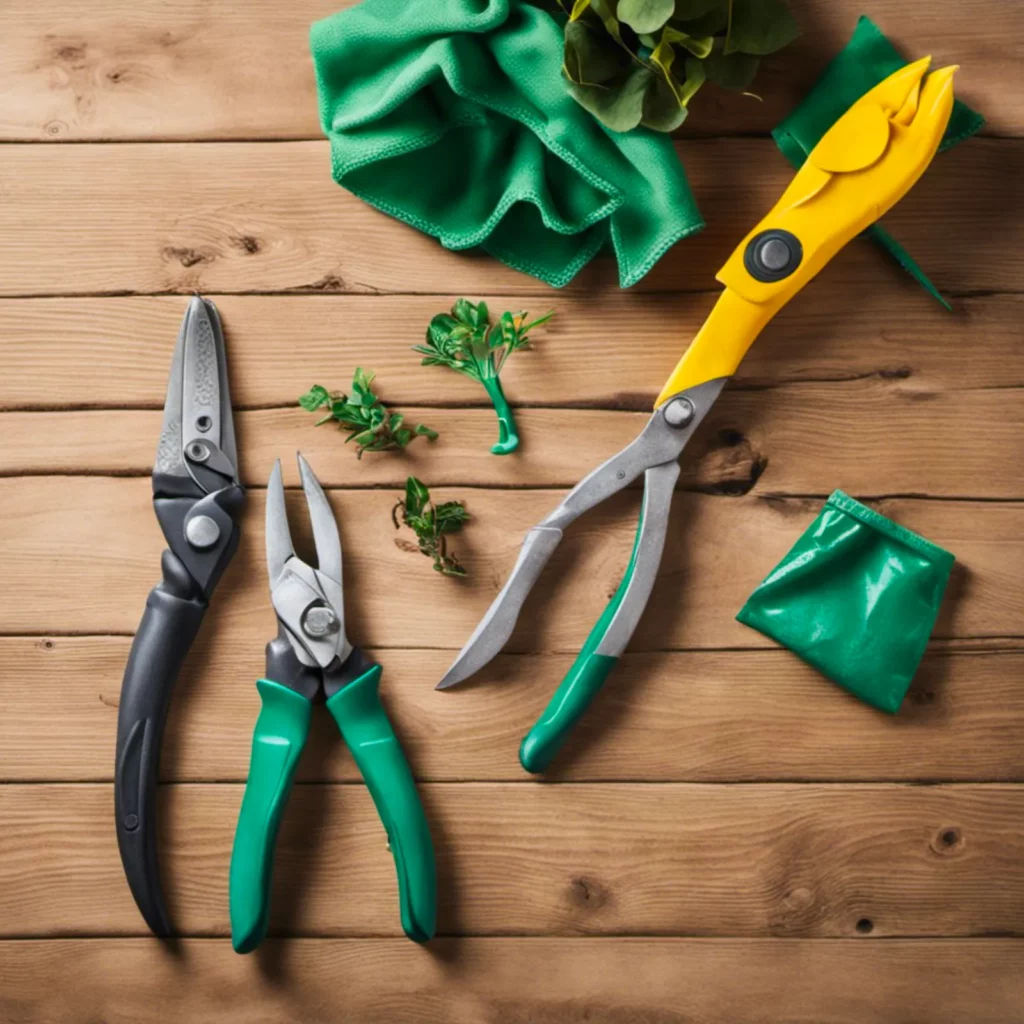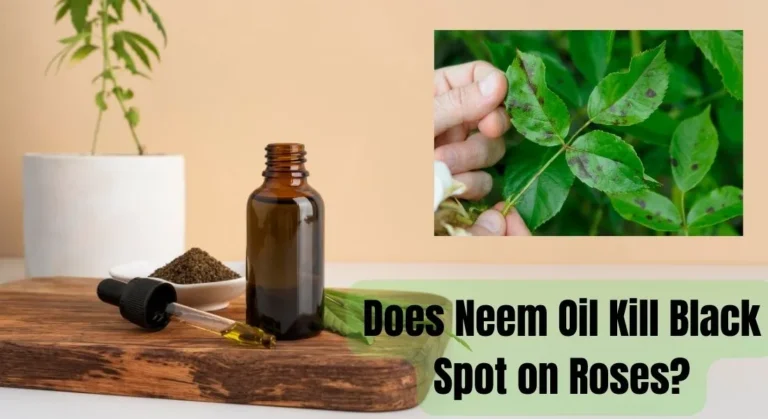How to Prune Overgrown Jasmine: A Beginner’s Guide
Is your jasmine plant growing out of control? Overgrown jasmine can damage your property and be unsightly. In this article, we’ll cover how to prune overgrown jasmine, including the best time to prune and the tools you’ll need.
Pruning not only keeps your plant tidy but also promotes healthy growth and more blooms. The timing of pruning depends on your jasmine variety: summer jasmine in late summer or early autumn, and winter jasmine in late spring after blooming. You’ll need pruning shears, and if it’s tall, a ladder or step stool. Gloves and safety glasses are recommended. Let’s get started!
Key Takeaways
- Pruning your jasmine plant promotes healthy growth and encourages more blooms.
- The best time to prune depends on the type of jasmine you have.
- You’ll need pruning shears, a ladder or step stool, gloves, and safety glasses to prune your overgrown jasmine.

How to Prune Overgrown Jasmine
So, your jasmine plant has grown a little wild and it’s time to give it a good trim. Pruning an overgrown jasmine plant can be intimidating, but with the right tools and techniques, it’s a simple task that can help promote healthy growth and beautiful blooms. Here’s what you need to know:
When to Prune
The best time to prune an overgrown jasmine plant is in late winter or early spring, before new growth begins.
This will give the plant plenty of time to recover and produce new growth before the next blooming season. It’s important to avoid pruning in the fall or winter, as this can remove the buds that will produce flowers in the spring.
Tools You’ll Need
Before you get started, make sure you have the right tools. You’ll need a pair of sharp pruning shears, loppers, and a pruning saw for larger branches. Make sure your tools are clean and sharp to avoid damaging the plant.
How to Prune
Here’s a step-by-step guide to pruning an overgrown jasmine plant:
- Remove any dead, damaged, or diseased branches first. These can be cut back to the nearest healthy growth.
- Next, remove any branches that are crossing or rubbing against each other. This will help improve air circulation and prevent disease.
- Now it’s time to cut back the remaining branches. Trim each branch back to a healthy bud or lateral shoot. Make sure to cut at a 45-degree angle to prevent water from pooling on the cut surface.
- If your jasmine plant is severely overgrown, you may need to cut it back more aggressively. In this case, you can cut the entire plant back to about 6 inches from the ground. This will help promote healthy, lush growth and keep the plant at a manageable size.
Best Time to Prune Jasmine
Pruning is an essential task for maintaining the health and appearance of your jasmine plant. It is necessary to prune your jasmine regularly to keep it healthy and encourage new growth.
However, pruning at the wrong time can damage your plant. In this section, we will discuss the best time to prune your jasmine plant.
Summer Jasmine
Summer jasmine should be pruned once a year, in late summer or early autumn. This is the best time to prune your summer jasmine because it has finished blooming, and the new growth will have enough time to mature before the winter frost arrives. Pruning summer jasmine in the spring or winter can damage the plant and reduce the number of flowers it produces.
Winter Jasmine
Winter jasmine should be pruned in late spring, immediately after it has finished blooming. Pruning winter jasmine at any other time can damage the plant and reduce the number of flowers it produces.
Winter jasmine is a vigorous grower, and pruning it regularly will help to keep it under control.
Star Jasmine
Star jasmine should be pruned in the same way as winter jasmine. Prune it in late spring, immediately after it has finished blooming. Star jasmine is a climbing plant, and pruning it regularly will help to keep it under control and encourage new growth.
General Tips
When pruning your jasmine plant, always use clean and sharp pruning tools. Clean your tools with rubbing alcohol or a solution of one-part bleach to nine parts water to prevent the spread of diseases. Always cut just above a leaf node and avoid cutting into old wood.
Tools Needed for Pruning Jasmine

Pruning your overgrown jasmine requires a few essential tools to make the process easier and more efficient. Here are the tools you’ll need:
Pruning Shears
Pruning shears are a must-have tool for any gardener. They are used to cut small branches, stems, and foliage. When pruning your jasmine, you’ll need a good pair of pruning shears to make precise cuts.
Look for a pair that is comfortable to hold, has sharp blades, and is easy to clean. You can find pruning shears at your local garden center or online.
Gardening Gloves
When pruning your jasmine, it’s important to protect your hands from thorns, prickly stems, and other sharp objects. Gardening gloves are a great way to protect your hands while pruning.
Look for gloves that are made of durable materials, such as leather or synthetic materials, and that fit your hands comfortably. You can find gardening gloves at your local garden center or online.
Garden Waste Bags
After pruning your jasmine, you’ll have a lot of waste to dispose of, including branches, stems, and foliage. Garden waste bags are a convenient way to collect all of your garden waste in one place.
Look for bags that are made of durable materials, such as polypropylene, and that are large enough to hold all of your garden waste. You can find garden waste bags at your local garden center or online.
Pruning your overgrown jasmine can be a rewarding experience, but it requires the right tools to do it properly. With the right tools and a little bit of know-how, you can transform your overgrown jasmine into a beautiful and healthy plant.
Step by Step Guide to Prune Overgrown Jasmine
If you have an overgrown jasmine plant, pruning it can help to promote new growth and keep it healthy. Here is a step by step guide to prune overgrown jasmine.
Identify Old and Dead Vines
The first step is to identify which vines are old or dead. These vines can be identified by their brown color, lack of leaves, and brittle texture.
Use sharp pruning shears to cut these vines at their base. Be sure to cut as close to the main stem as possible.
Prune the Vines
Next, prune the remaining vines. Use pruning shears to cut the vines back to just above a leaf node. This will encourage new growth and help to shape the plant. Be sure to cut at a slight angle, about 1/4 inch above the leaf node.
Shape the Plant
After pruning the vines, shape the plant by removing any branches that are growing in an undesirable direction.
Use pruning shears to cut these branches back to just above a leaf node, as mentioned above. You can also use the pruning shears to thin out any dense areas of the plant.
Clean Up
Once you have finished pruning and shaping the plant, clean up any debris that may have fallen to the ground. This will help to prevent any diseases or pests from taking hold. Dispose of the debris away from the plant to minimize the risk of reinfection.
By following these steps, you can help to keep your overgrown jasmine plant healthy and looking great. Remember to prune your jasmine plant regularly to keep it in top shape.
Aftercare Tips for Pruned Jasmine
Congratulations! You have successfully pruned your overgrown jasmine plant. Now it’s time to take care of it so that it can thrive and bloom beautifully. Here are some aftercare tips for your pruned jasmine:
- Watering: Jasmine plants need consistent moisture, but they don’t like to be overwatered. Water your jasmine plant deeply once or twice a week, depending on the weather and soil conditions. Make sure the soil is moist but not waterlogged. You can check the soil moisture level by sticking your finger 1-2 inches into the soil. If it feels dry, it’s time to water. If it feels wet, wait a day or two before watering again.
- Fertilizing: Jasmine plants benefit from regular fertilization during the growing season. Use a balanced fertilizer with equal amounts of nitrogen, phosphorus, and potassium. You can also use a fertilizer specifically formulated for flowering plants. Follow the manufacturer’s instructions for application rates and frequency.
- Sunlight: Jasmine plants need plenty of sunlight to bloom. Make sure your plant gets at least 6 hours of direct sunlight each day. If you live in a hot climate, your jasmine plant may benefit from some afternoon shade.
- Support: If you pruned your jasmine plant heavily, it may need some support as it regrows. Use stakes or a trellis to help your plant grow upward and outward. Make sure the support is sturdy and won’t damage the plant.
- Pest control: Jasmine plants are susceptible to aphids, spider mites, and other pests. Keep an eye out for any signs of infestation, such as yellowing leaves or sticky residue on the leaves. If you notice any pests, treat your plant with an insecticidal soap or neem oil spray.
- Pruning maintenance: Regular pruning can help keep your jasmine plant healthy and in shape. Prune your plant once or twice a year to remove dead or diseased wood, shape the plant, and encourage new growth. Follow the pruning tips we discussed earlier to ensure healthy regrowth.
By following these aftercare tips, you can help your pruned jasmine plant thrive and bloom beautifully. Remember to check your plant regularly for any signs of stress or pests, and adjust your care routine as needed. With a little bit of attention and care, your jasmine plant will reward you with fragrant blooms and lush foliage.
Planting and Supporting Jasmine for Best Results
Now that you’ve got the pruning part down, let’s talk about how to plant and support your jasmine for the best results:
- Optimal conditions: Different jasmine varieties have their preferred growing conditions. Summer jasmine enjoys a sunny spot, while winter jasmine is happier in a shady location. Keep this in mind when choosing where to plant your jasmine.
- Right location: Plant your jasmine where you can best enjoy its fragrance, as well as appreciate the hummingbirds and butterflies that will be drawn to its blooms. Your garden can become a haven for both you and your winged friends.
- Support system: Jasmine plants are climbers, so they’ll need some help to reach their full potential. Provide them with a trellis, arbor, or any other suitable structure to help guide their growth and show off their beauty.
Frequently Asked Questions (FAQs)
When should I prune my jasmine plant?
Prune your jasmine right after it flowers, which depends on the variety you have. Summer jasmine blooms in summer and early fall, while winter jasmine blooms in late winter and early spring.
How often should I prune jasmine plants?
You should prune your jasmine plants at least once a year, right after they flower. If you have an unmanageable plant, you may need to do intensive pruning in late winter to promote spring growth.
Can I still prune my jasmine if I missed the optimal pruning time?
Yes, you can still prune your jasmine, but be aware that you may lose some blooms if you prune too close to the flowering season.
How do I encourage my jasmine plant to produce more blooms?
Pruning and pinching are essential for encouraging more blooms. Regularly prune your jasmine after it flowers, and pinch the stems of young plants to promote rapid growth and lush foliage.
What tools should I use for pruning jasmine?
Sharp, clean pruning shears or garden scissors are the ideal tools for pruning jasmine plants.
Conclusion
And that’s a wrap! Pruning jasmine plants is crucial for their health, appearance, and fragrance. By following the outlined steps and tips in this blog post, you’ll be well on your way to having well-pruned, gorgeous jasmine plants that fill your garden with their captivating scent and vibrant blooms.
Remember, a little TLC goes a long way in the world of gardening. So grab your pruning shears, channel your inner green thumb, and give your jasmine plants the care they deserve. Happy pruning!
Related Posts:
- How to Propagate Jasmine Plant in Water: A Comprehensive Guide
- Propagating Jasmine Plants Without Rooting Hormone: The Natural Way
- Does Star Jasmine Damage Walls? A Comprehensive
- Is Your Star Jasmine in Trouble? Here’s Why the Leaves Are Turning Red
- Does Arabian Jasmine Attract Snakes? What You Need to Know





